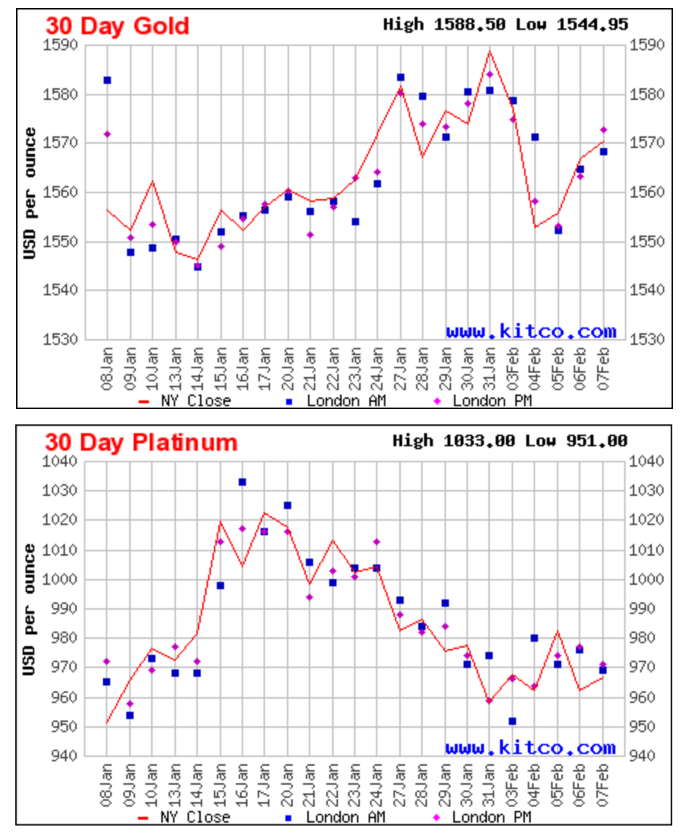There are many precious things in the world, but almost none of them are used as money.
Natural diamonds have long been more valuable per gram than gold, but they’re inconsistent. No two of the same weight have the exact same clarity, color, etc.—and hence the value differs.
Pure metallic iron is consistent, and useful for so many things that it’s quite valuable. But it rusts when it gets wet. It cracks and wears with age. It even shatters under certain conditions. It’s not durable enough to be a good form of money.
The Mona Lisa has lasted centuries and is one of the most valuable pieces of art on earth, but it’s not divisible. You wouldn’t tear it in half to pay for something that cost “half a Mona Lisa.” And if someone offered you a smaller Van Gogh as change, how could you be sure it wasn’t a forgery? It would be pretty inconvenient to have to hire a professional art assessor every time you made a purchase.
The plastic paper that many governments are now issuing as money is quite durable, consistent, convenient, and divisible (via other pieces of paper and coins). But it lacks one important aspect from Aristotle’s famous list of what makes for good money. To be freely accepted by people as money, something needs to be, as above, consistent, convenient, durable, divisible—but it also needs to have value in and of itself.
To this, my friend Doug Casey added something that Aristotle had never seen or dreamed of: money needs to be something governments (or other authorities) can’t print or create with the click of a keyboard, inflating its supposed value away.
That’s why paper was never a good form of money even before it was turned into plastic. And that’s why bankrupt governments determined to spend money they didn’t have had to pass laws forcing people to use their paper in the first place.
This “intrinsic value” requirement is also a problem for Bitcoin and other cryptocurrencies.
I don’t dispute their usefulness as transfer vehicles. But that’s not the same as the intrinsic value metals like gold and silver have, with their unique physical and chemical properties. A digital currency backed by something with real value could qualify. But even then, it becomes a derivative of the thing it’s based on, not an intrinsic value in and of itself. Real-world backing also makes it subject to counterparty risk, while bullion in one’s direct possession is not.
On the other paw, gold and silver (and even copper, to a lesser degree) meet all six Aristotle–Casey qualifications for use as money. That’s why they’ve been used as money for thousands of years, valued in proportion to their scarcity. They are monetary metals.
Platinum, palladium, rhodium, and the like are not monetary metals.
All of these are precious, in that they’re expensive. But they fail the convenience test. They are all silvery metals that look much alike. Honestly, I couldn’t tell the difference between a palladium coin and a silver coin without scales and assay equipment. Few people could. This makes other silvery metals inconvenient as money.
Why doesn’t this disqualify silver itself? Well, the other “precious” silvery metals are rarer and more expensive than silver. No one would try to trick you into taking a platinum or palladium coin instead of a silver coin—they’d lose on the deal. And cheaper “white” metals like nickel or aluminum would never be mistaken for silver. Like gold, silver is unique in its own way.
Copper, of course, has a color as distinct as gold, but is much more common and less durable. The greater bulk of it needed to pack the same value as silver or gold is not convenient. That rightly makes it less valuable in a monetary context… though it makes sense that it was used for making small change.
This is why today, gold and silver alone still respond to safe-haven demand—as they have for thousands of years. They’re different from other commodities, unique in this monetary aspect. Other metals prices, even for rare ones like platinum, are driven almost entirely by the laws of supply and demand as industrial commodities. That’s why palladium is more expensive than platinum or gold as I type, for instance. This is driven by an industrial supply crunch—which may or may not last.
Just look at the opposite price movements in gold and platinum over the last month.

Clearly, “precious” is not the same thing as “safe haven” and it’s “monetary” that makes the difference.
Case closed.
Today, there’s a strong case for loading up on safe-haven assets before the bubble on Wall Street bursts. As we think of that, it’s important to remember this. For the safety inherent in owning them, only gold and silver will do.
And for leverage on their price movements, speculating on gold and silver stocks is our best shot at big wins with the least risk this year and beyond.
That’s my take,
![]()
P.S. To be kept abreast of opportunities and issues affecting resource speculators, please sign up for our free, no spam weekly Speculator’s Digest.

